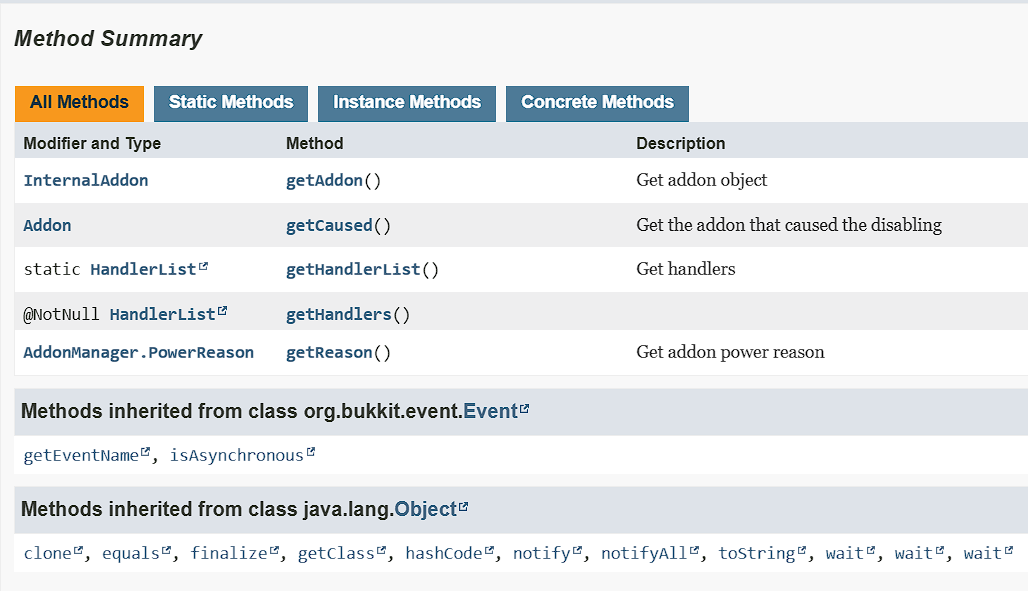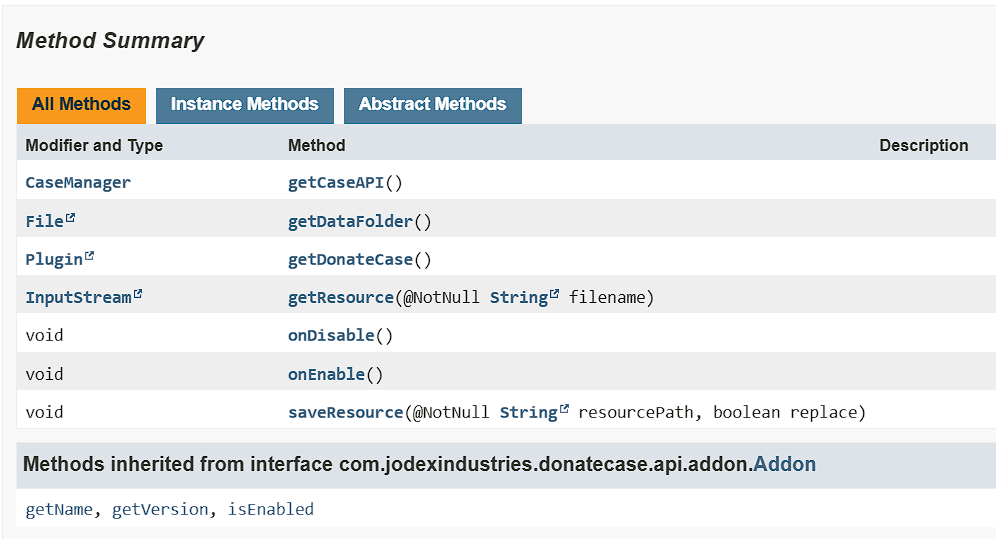DCEventManager Wiki
This addon allows you to manage DonateCase events.
With it, you can perform certain actions, such as sending messages and executing commands on behalf of the console.
How does it work?
The addon listens to all events that are registered in DonateCase.
Receiving events takes place with the help of reflection, which means that when you update DonateCase, new events will be automatically uploaded to DCEventManager, without the need to update the addon!
Example config.yml
Debug: false
Package: "com.jodexindustries.donatecase.api.events" # dont change this
Events:
MyEvent:
Event: AnimationStartEvent
Actions:
- "[command] say Animation started!"
MyAnotherEvent:
Event: AnimationEndEvent
Actions:
- "[broadcast] &dAnimation ended!"
Events
List of all events available here
Actions
All DonateCase actions
DCEventManager actions
Method invoke
Example
- [invoke] setCancelled(true)
Case-Specific Support
Works only if event has getCaseType or getCaseData methods
Events:
MyEvent:
Event: AnimationStartEvent # your event
Case: case # here specific case
Actions:
- "[command] say Case opened!"
Slot-Case-Specific Support
Works only if event has getSlot method
Events:
MyEvent:
Event: CaseGuiClickEvent # your event
Case: case # here specific case
Slot: 1 # here specific slot
Actions:
- "[command] say Gui clicked!"
Placeholders
DCEventManager has its own personal placeholder system that allows you to use ALL the methods that events provide.
This system works with the help of Reflection!
An example of a placeholders:
Events:
AddonDisableEvent: # event class name
addon: # placeholder id
placeholder: "%addon%" # replaced placeholder
method: "getAddon#getName" # class method
reason: # placeholder id
placeholder: "%reason%" # replaced placeholder
method: "getReason" # class method
caused: # placeholder id
placeholder: "%caused%" # replaced placeholder
method: "getCaused#getName" # class method
If you don't understand programming, then it can look a little confusing, because of the method parameter.
But don't be disappointed, it's as simple as that!
This parameter is used to determine where the placeholder value will be taken from.
Let's take a look at the JavaDocs of the AddonDisableEvent class

Here we can see that the AddonDisableEvent class has several interesting methods, such as: getAddon, getCaused, and getReason
I think you've already guessed that these are the methods used to get placeholder values, but what is #?
This is a symbol for separating methods. For example, we call the getAddon method, which is an InternalAddon object that has the following methods:
 Of course, it will be a little strange to just display information about some InternalJavaAddon without additional instructions, but it is worth looking at what this class is and it looks like it represents the interface of an internal addon and we can take some useful information from it! Let's get the name of this addon, it seems that the getName method is just right for us!
Of course, it will be a little strange to just display information about some InternalJavaAddon without additional instructions, but it is worth looking at what this class is and it looks like it represents the interface of an internal addon and we can take some useful information from it! Let's get the name of this addon, it seems that the getName method is just right for us!
Well, now our method looks like this: getAddon#getName
If you have any additional questions, please contact our Discord server!